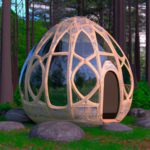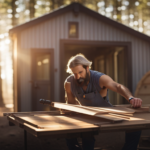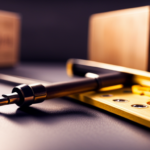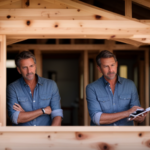Beginners Guides
How Make Tiny House

Ever fantasized about inhabiting a snug, small area that reflects your individuality? A space where you can declutter your lifestyle and concentrate on what’s genuinely important? If that’s the case, then constructing a tiny home could be the ideal option for you.
In this article, I will guide you through the process of creating your own tiny house, step by step. From determining your needs and goals, to choosing a suitable location, designing the layout, and obtaining the necessary permits and insurance, I will provide you with all the information you need to get started.
We will also discuss how to gather the materials and tools, install plumbing and electrical systems, insulate and finish the interior, and add the final touches and decorations.
So, if you’re ready to embark on this exciting journey, let’s dive in and learn how to make your dream of living in a tiny house a reality.
Key Takeaways
- Building a tiny house offers benefits such as simplifying life, promoting financial freedom, and reducing stress levels.
- The steps to building a tiny house include determining needs and goals, setting a budget, choosing a suitable location, and obtaining permits and insurance.
- Key considerations when building a tiny house include budget alignment, location proximity to amenities, material durability, and adherence to building codes.
- Personalization and mindful downsizing are important aspects of building a tiny house, including finishing techniques, color schemes, and avoiding clutter.
Determine Your Needs and Goals
Before diving into the exciting world of building a tiny house, it’s important to determine what your needs and goals are for this unique living space. Identifying your priorities is the first step in creating a tiny house that perfectly suits your lifestyle. Consider what is most important to you – whether it’s having a minimalist design, maximizing storage space, or being environmentally friendly.
Once you have a clear understanding of your priorities, you can set a budget that aligns with your goals. This will help you make informed decisions about materials, appliances, and any additional features you want to incorporate into your tiny house. Remember, a tiny house is all about efficiency and functionality, so it’s crucial to plan ahead and allocate your resources wisely.
Now that you have determined your needs and set a budget, it’s time to choose a suitable location for your tiny house.
Choose a Suitable Location
Selecting an appropriate site for my compact dwelling involves considering various factors such as the surroundings, accessibility, and overall feasibility. When selecting a location for my tiny house, I need to take into account the proximity to amenities and services, such as grocery stores, hospitals, and schools.
Additionally, I should consider the natural surroundings, such as the presence of trees, bodies of water, or scenic views that can enhance my living experience. The accessibility of the site is also crucial, as I want to ensure that I have easy access to major roads and public transportation.
Moreover, I need to assess the feasibility of the location in terms of zoning regulations and building codes. It’s important to find land that allows for the construction of a tiny house and to comply with any necessary permits or regulations.
By carefully selecting the location for my tiny house, I can create a harmonious living environment that meets my needs and goals. Once I’ve found the suitable site, I can then proceed to the next step of designing my compact dwelling.
Design Your Tiny House
Once you’ve decided on the suitable site, it’s time to begin brainstorming and blueprinting your cozy, cleverly crafted compact dwelling. Designing your tiny house is an exciting process that allows you to unleash your creativity while incorporating the latest tiny house design trends. The key to maximizing space in a tiny house is to think strategically and utilize every square inch efficiently.
To help you get started, I’ve created a table below showcasing three innovative design ideas that can make a significant difference in your tiny house:
| Design Idea | Description | Benefit |
|---|---|---|
| Lofted Sleeping Area | Utilize vertical space by creating a lofted sleeping area, freeing up valuable floor space | Maximize living space and create a cozy, separate sleeping sanctuary |
| Multi-Purpose Furniture | Invest in furniture that serves multiple functions, such as a sofa that converts into a bed or a dining table that can be folded against the wall | Save space and have furniture that adapts to your changing needs |
| Clever Storage Solutions | Incorporate creative storage solutions, like built-in shelving, hidden compartments, and under stairs storage | Keep your belongings organized and out of sight, reducing clutter |
By incorporating these design ideas, you can create a functional and stylish tiny house that maximizes space and meets your needs. Moving forward, it’s important to obtain permits and insurance to ensure the legality and protection of your tiny house project.
Transitioning into the subsequent section about obtaining permits and insurance, it’s crucial to navigate the regulatory requirements and secure the necessary documentation to bring your dream tiny house to life.
Obtain Permits and Insurance
To ensure the safety and legality of your dream tiny house, you’ll need to navigate the process of obtaining permits and insurance, allowing you to confidently bring your unique vision to life.
When it comes to permits, it’s essential to research and understand the regulations in your area. Start by contacting your local building department to inquire about the specific requirements for tiny houses. They’ll provide you with the necessary permit application forms and guide you through the process. It’s crucial to complete these forms accurately and submit them in a timely manner to avoid any delays in your project.
Now, let’s talk about insurance coverage. While not always required, getting insurance for your tiny house is highly recommended. It provides protection against potential risks such as theft, fire, or accidents. Contact insurance providers specializing in tiny houses to find the coverage that suits your needs. They can help you understand the different options available and ensure you have adequate protection for your investment.
Obtaining permits and insurance is a crucial step towards making your tiny house project a success. Once you have these in place, you can proceed with confidence to the next phase of your journey: gathering materials and tools.
Gather Materials and Tools
Now that you have your permits and insurance sorted, what materials and tools do you need to bring your dream tiny house to life? Sourcing the right materials is crucial for a successful project. You want to ensure that the materials you choose are not only durable but also lightweight to maximize the available space in your tiny house. Consider using sustainable materials such as reclaimed wood or recycled metal to reduce your environmental impact.
In order to select the right tools, you need to consider the complexity of your project and your personal skill level. A basic toolkit should include essential items such as a measuring tape, hammer, screwdriver set, level, and a power drill. Additionally, specialized tools like a miter saw, circular saw, and a nail gun can make your construction process more efficient.
To help you better visualize the materials and tools needed, here is a table that outlines some common items:
| Materials | Tools |
|---|---|
| Plywood | Measuring tape |
| Insulation | Hammer |
| Lumber | Screwdriver set |
| Roofing materials | Level |
| Siding | Power drill |
Now that you have gathered all the necessary materials and tools, it’s time to move on to the next section and start building the foundation and frame of your tiny house.
Build the Foundation and Frame
With the foundation and frame in place, you’ll feel a surge of excitement as your dream tiny house starts to take shape. Building a tiny house requires careful planning and the use of specific building techniques to ensure a sturdy and reliable structure.
The foundation serves as the base of your house and can be built using either a concrete slab or a pier-and-beam system. This decision will depend on your specific needs and budget.
Once the foundation is completed, it’s time to start building the frame. The frame provides the structural support for your tiny house and can be constructed using wood or metal. Wood is a popular choice due to its affordability and ease of use. However, metal frames offer greater durability and resistance to pests and weather conditions.
Before beginning the frame construction, it’s important to have a detailed cost estimation to ensure you stay within your budget. This includes factoring in the cost of materials, tools, and any professional help you might need.
As you complete the foundation and frame, you’ll be ready to move on to the next step: installing plumbing and electrical systems. This crucial stage will bring your tiny house one step closer to being fully functional and livable.
Install Plumbing and Electrical Systems
Once you’ve built the foundation and frame, it’s time for you to dive into the installation of plumbing and electrical systems, bringing your dream tiny house closer to becoming a comfortable and functional home.
When it comes to tiny house plumbing, it’s important to carefully plan and design the layout to maximize space efficiency. You’ll need to install a water supply system, including a water heater, water lines, and a sewage system. To ensure proper functioning, it’s crucial to use high-quality materials and follow local building codes.
When it comes to electrical system installation techniques in a tiny house, safety should be the top priority. Begin by determining your power needs and design a system accordingly, including outlets, switches, and lighting fixtures. It’s essential to use a circuit breaker panel to protect against overloads and install Ground Fault Circuit Interrupters (GFCIs) to prevent electric shock in wet areas. Don’t forget to properly ground your electrical system to ensure safety.
Next, you’ll want to insulate and finish the interior of your tiny house. This step will not only provide comfort but also help with energy efficiency. By insulating the walls, floors, and ceiling, you can regulate the temperature inside and reduce noise. Once the insulation is in place, you can move on to finishing the interior with your chosen materials, such as drywall or wood paneling. This will give your tiny house a polished and personalized look.
Transitioning into the subsequent section about ‘insulate and finish the interior’, you can now focus on creating a cozy and inviting living space.
Insulate and Finish the Interior
To create a warm and inviting living space, it’s essential to insulate and finish the interior of your cozy abode.
When it comes to finishing techniques, there are various options to consider. One popular choice is drywall, which provides a smooth and polished look to the walls. It can be easily installed and painted to match your desired aesthetic.
Another option is tongue and groove paneling, which adds a rustic charm to the interior. This type of paneling can be made from wood or other materials and gives a cozy cabin-like feel to your tiny house.
In terms of insulation, there are different options available depending on your climate and personal preferences. Fiberglass insulation is a common choice due to its affordability and effectiveness in trapping heat. It comes in rolls or batts that can be easily installed between the studs.
Another option is spray foam insulation, which provides a superior air seal and is ideal for tiny house owners who want maximum energy efficiency.
Once the insulation and finishing techniques are complete, it’s time to add the final touches and decorations to make your tiny house truly feel like home.
Add the Final Touches and Decorations
After insulating and finishing the interior of your tiny house, it’s time to add the final touches and decorations that will truly make it feel like home.
These decorative elements not only enhance the aesthetics of your space but also allow you to personalize it according to your taste and style.
One of the first things you can do is to choose a color scheme that reflects your personality and creates a harmonious atmosphere. Whether you prefer bold and vibrant colors or a more tranquil and neutral palette, painting the walls and choosing coordinating fabrics for curtains and pillows can make a significant impact.
Next, consider adding artwork, photographs, or other wall hangings that reflect your interests and experiences. These can serve as conversation starters and add a personal touch to your space.
In addition to wall decor, don’t forget about smaller decorative items such as plants, candles, and decorative bowls or trays. These can add texture and visual interest to your tiny house.
As you add these final touches and decorations, remember to keep the overall size and scale of your tiny house in mind. You want to avoid clutter and choose items that enhance the space rather than overwhelm it.
With the final touches in place, it’s time to move into your tiny house and enjoy your new lifestyle.
Move into Your Tiny House and Enjoy Your New Lifestyle
Now that I’ve settled into my cozy abode, it’s time to fully embrace the tiny living lifestyle and revel in the fact that research shows that people who downsize their living spaces experience a decrease in stress levels by 33%.
It’s truly amazing how a smaller and simpler living space can have such a positive impact on my overall well-being.
One of the things I love about living in a tiny house is being able to stay up to date with the latest trends. There are always new and innovative ideas popping up in the tiny house community, from space-saving storage solutions to eco-friendly designs. It’s exciting to see how people are constantly pushing the boundaries of what is possible in a small space.
Another benefit of downsizing is the financial freedom it brings. With a smaller mortgage or no mortgage at all, I have more money to spend on experiences and adventures. I can travel more, pursue my passions, and live a more fulfilling life.
Living in a tiny house has also made me more mindful of my consumption habits. I’ve learned to appreciate the things that truly bring me joy and let go of the rest. It’s a liberating feeling to let go of material possessions and focus on what really matters.
Overall, moving into my tiny house has been a transformative experience. I feel lighter, happier, and more connected to the world around me. I encourage anyone considering downsizing to give it a try and discover the many benefits of living small.
Frequently Asked Questions
How much does it cost to build a tiny house?
The cost of building a tiny house can vary depending on several factors such as the size, materials used, and location.
A rough cost estimation for a basic tiny house is around $20,000 to $30,000. However, more elaborate designs and high-end finishes can increase the cost significantly.
Financing options for tiny houses include personal loans, RV loans, or even crowdfunding. It’s important to research and compare different options to find the best financing solution for your specific needs.
What are the legal restrictions for building a tiny house in my area?
Legal requirements and zoning regulations for building a tiny house vary depending on the area. It’s crucial to research and understand the specific rules in your location.
For instance, in a study conducted by the American Tiny House Association, it was found that only 23% of cities have specific regulations for tiny houses. This highlights the importance of being aware of the legal restrictions and ensuring compliance with building codes and permits before embarking on your tiny house project.
Can I build a tiny house on wheels instead of a foundation?
When considering building a tiny house, it’s important to weigh the pros and cons of choosing a foundation or wheels.
Building a tiny house on wheels offers the advantage of mobility, allowing you to easily move your home to different locations. However, it may require additional permits and regulations, and can be more expensive to construct.
On the other hand, building a tiny house on a foundation provides stability and less hassle with regulations, but lacks the flexibility of mobility.
Consider your priorities and lifestyle when deciding between the two options.
How long does it typically take to build a tiny house?
Typically, it takes several months to build a tiny house, depending on the complexity and size of the project. The typical timeline involves several stages, including designing, acquiring materials, and construction.
However, construction challenges can arise, such as limited space, plumbing and electrical installations, and ensuring structural stability. These challenges may extend the timeline, but with careful planning and attention to detail, building a tiny house can be a rewarding and fulfilling experience.
Are there any specific building codes or regulations I need to follow when constructing a tiny house?
When constructing a tiny house, it’s crucial to adhere to specific building codes and regulations to ensure safety and compliance. Building permits are typically required, and it’s essential to check with your local municipality for specific requirements.
Zoning requirements also play a role in determining where you can legally build your tiny house. It’s important to research and understand these regulations before beginning construction to avoid any legal issues down the road.
Conclusion
After going through the process of building my own tiny house, I can confidently say that it’s a rewarding and fulfilling experience.
By determining my needs and goals, choosing a suitable location, and designing the house to my liking, I was able to create a space that perfectly fits my lifestyle.
Obtaining the necessary permits and insurance gave me peace of mind, while gathering materials and tools allowed me to bring my vision to life.
Installing plumbing and electrical systems, insulating and finishing the interior, and adding the final touches and decorations all contributed to making my tiny house a comfortable and personalized space.
Now, I can proudly say that I’ve moved into my tiny house and I’m enjoying a new and simplified lifestyle.
Hi, I’m Emma. I’m the Editor in Chief of Tiny House 43, a blog all about tiny houses. While tree houses are often associated with childhood, they can be the perfect adult retreat. They offer a cozy space to relax and unwind, surrounded by nature. And since they’re typically built on stilts or raised platforms, they offer stunning views that traditional homes simply can’t match. If you’re looking for a unique and romantic getaway, a tree house tiny house might just be the perfect option.
Beginners Guides
How Did the City of Fresno to Tiny House
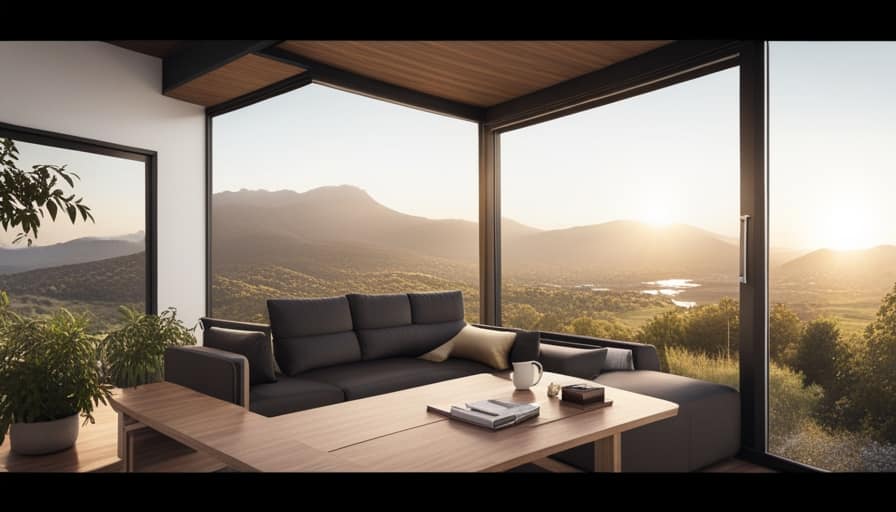
As someone living in Fresno, I have always believed in the saying ‘home is where the heart is.’ Thanks to the city’s forward-thinking housing policies, even the smallest of homes can now have a place to call their own.
In this article, we’ll explore how Fresno has embraced the tiny house movement, collaborating with advocates and implementing innovative zoning regulations. Join me as we delve into the challenges faced and the remarkable progress made towards building a thriving tiny house community in Fresno.
Key Takeaways
- Fresno has implemented housing policies and initiatives aimed at increasing access to affordable housing, including energy-efficient homes and tiny house construction.
- Collaboration with tiny house advocates is crucial for effective housing solutions, as they bring valuable insights and innovative ideas to the table.
- Zoning regulations and permitting processes in Fresno are designed to engage the community and ensure that their needs and preferences are considered.
- Fresno has created innovative tiny house communities that focus on sustainability and affordability, incorporating features such as solar panels and rainwater harvesting systems.
The Shift in Housing Policies
I’m excited to talk about the changes happening in housing policies.
One of the most pressing issues in our society today is housing affordability. Many individuals and families struggle to find affordable housing options, causing financial strain and instability.
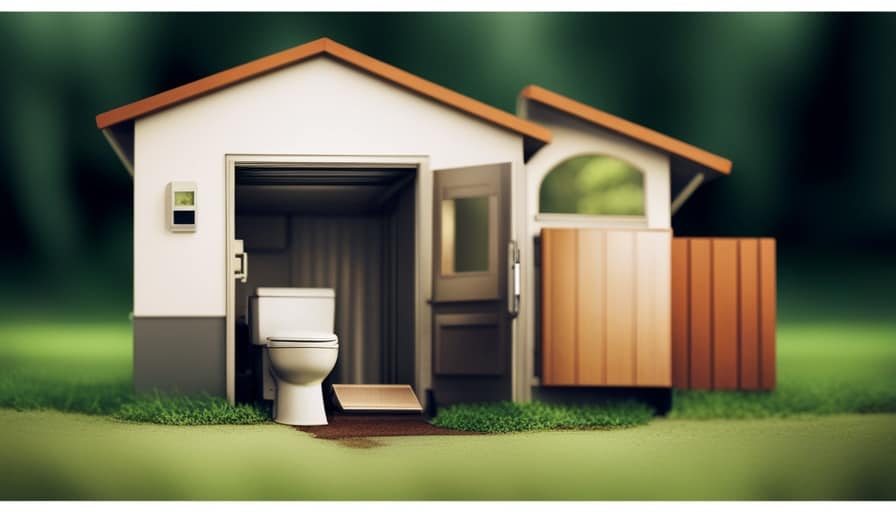
As a result, there’s been a shift in housing policies towards promoting sustainable living and increasing access to affordable housing. Governments and organizations are recognizing the importance of creating housing opportunities that are both environmentally friendly and economically viable.
This involves initiatives such as promoting energy-efficient homes, supporting the construction of tiny houses, and implementing rent control measures.
Collaborating With Tiny House Advocates
Collaborating with tiny house advocates has been crucial in implementing effective housing solutions in the city of Fresno. Through collaboration strategies and community engagement, we’ve been able to work hand in hand with advocates to address the unique challenges and opportunities that tiny houses present.
These collaborations have allowed us to tap into the knowledge and expertise of tiny house advocates, who bring valuable insights and innovative ideas to the table. We’ve engaged in open and transparent dialogues, fostering a sense of trust and understanding between all parties involved.
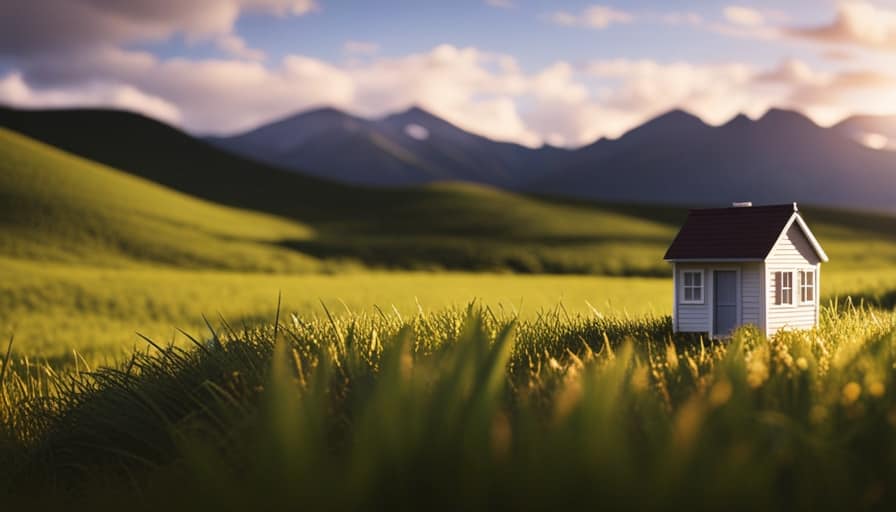
Zoning Regulations and Permitting Processes
Navigating the complexities of zoning regulations and permitting processes can be challenging, but it’s essential for ensuring the successful implementation of tiny house communities in the city of Fresno.
To streamline processes and make it easier for individuals and organizations to develop tiny house communities, the city of Fresno has taken steps to engage with the community and actively involve them in the decision-making process.
This includes hosting public meetings, soliciting feedback, and conducting thorough assessments of potential sites for tiny house communities. By involving the community in these processes, the city of Fresno can address any concerns or issues that may arise, while also ensuring that the needs and preferences of the community are taken into consideration.
This collaborative approach not only helps to build trust and support, but also allows for a more efficient and effective implementation of tiny house communities in the city.
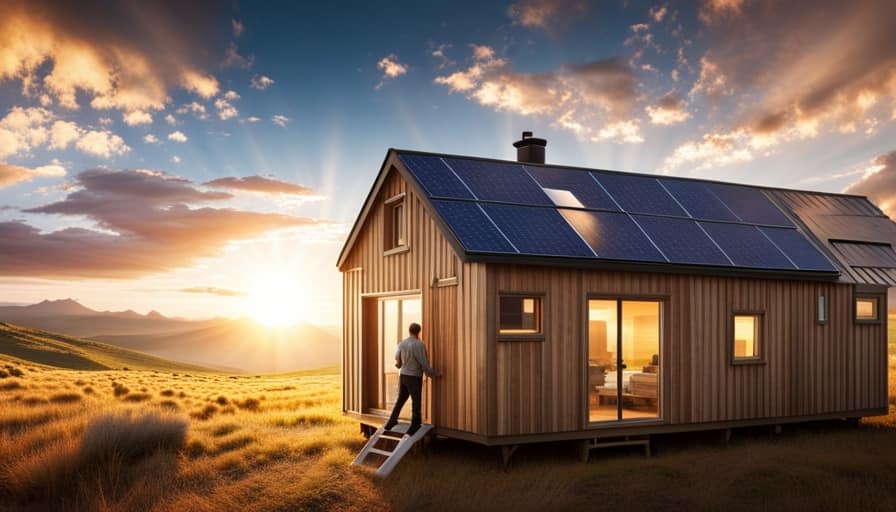
Innovative Tiny House Communities in Fresno
One innovative approach to creating tiny house communities in Fresno is through the use of sustainable materials and renewable energy sources. These communities are designed with a focus on sustainability, incorporating features such as solar panels, rainwater harvesting systems, and energy-efficient appliances. By utilizing these sustainable practices, residents can reduce their carbon footprint and live in homes that are environmentally friendly.
Additionally, these communities aim to provide affordable living options for individuals who may not be able to afford traditional housing. Through the use of smaller, more efficient spaces, the cost of construction and maintenance is reduced, making it more accessible for those on a limited budget.
These innovative tiny house communities in Fresno are paving the way for sustainable housing and promoting affordable living for all.
Transitioning into the next section, let’s explore the challenges faced in building a tiny house movement.
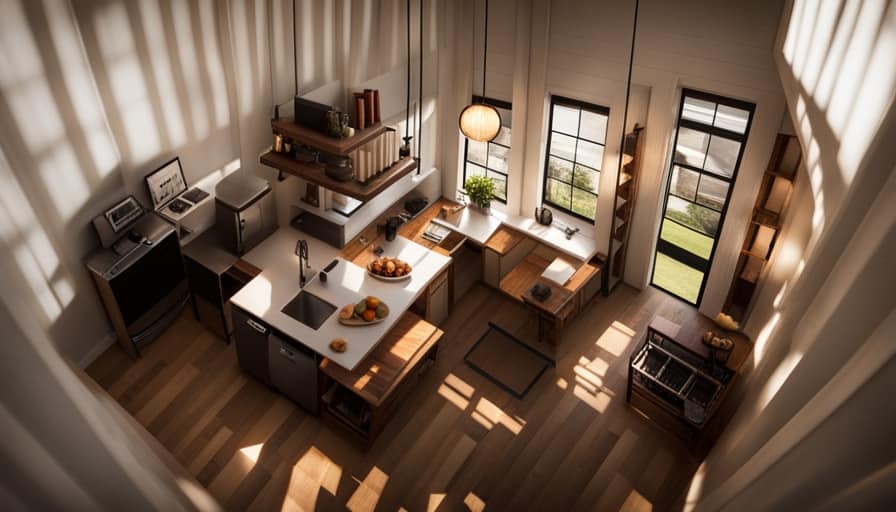
Overcoming Challenges and Building a Tiny House Movement
Confronting obstacles and working together, we can create a thriving tiny house movement in Fresno.
To overcome challenges and build a sustainable and affordable housing solution, we must first address zoning regulations. Currently, many cities have restrictions that make it difficult to build tiny houses on a permanent foundation. By advocating for changes in zoning laws, we can create more opportunities for tiny house communities.
Additionally, we need to address financing options for individuals interested in building tiny houses. Traditional lending institutions may not provide loans for these unconventional homes, so alternative financing options must be explored. Collaborating with local government, community organizations, and financial institutions can help us develop innovative solutions to overcome these challenges.
Frequently Asked Questions
How Long Does It Typically Take to Build a Tiny House?
Typically, it takes around 2-4 months to build a tiny house. The building timeline can vary based on factors like design complexity, availability of materials, and contractor availability. Cost considerations include materials, labor, and permits.
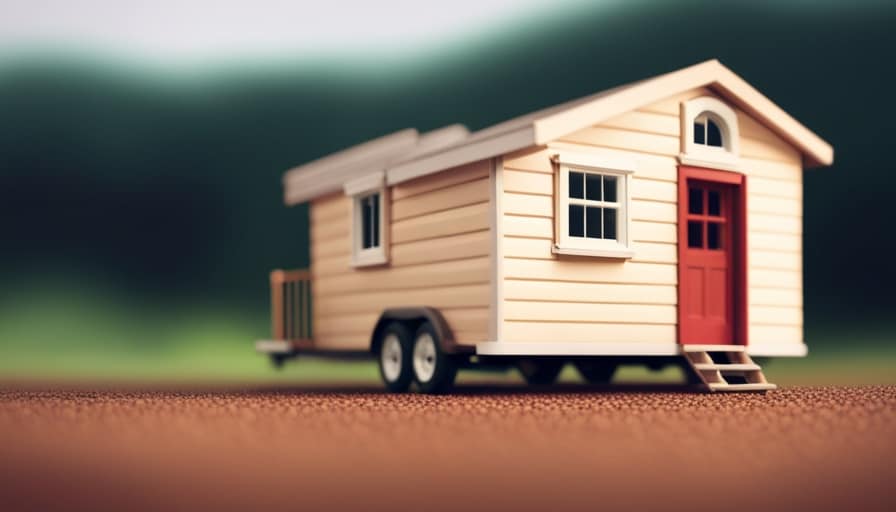
Are There Any Specific Requirements for the Size or Design of a Tiny House in Fresno?
In Fresno, specific requirements exist for the size and design of tiny houses. The city has set guidelines to ensure safety and conformity. Meeting these requirements is crucial to obtaining necessary permits and building a legally compliant tiny house.
Can I Legally Live in a Tiny House on Wheels in Fresno?
Yes, you can legally live in a tiny house on wheels in Fresno. While specific regulations may vary, other cities have implemented tiny house regulations with benefits such as affordability, sustainability, and minimal environmental impact.
How Can I Find Resources and Support for Building My Own Tiny House in Fresno?
Finding local workshops and connecting with tiny house builders in Fresno is crucial for building my own tiny house. Through thorough research and analytical thinking, I can discover resources and support to ensure a successful project.
Are There Any Financial Incentives or Grants Available for Individuals Interested in Building a Tiny House in Fresno?
There are financial assistance programs and grants available for individuals interested in building a tiny house in Fresno. It’s important to familiarize yourself with the building regulations and requirements to ensure compliance.
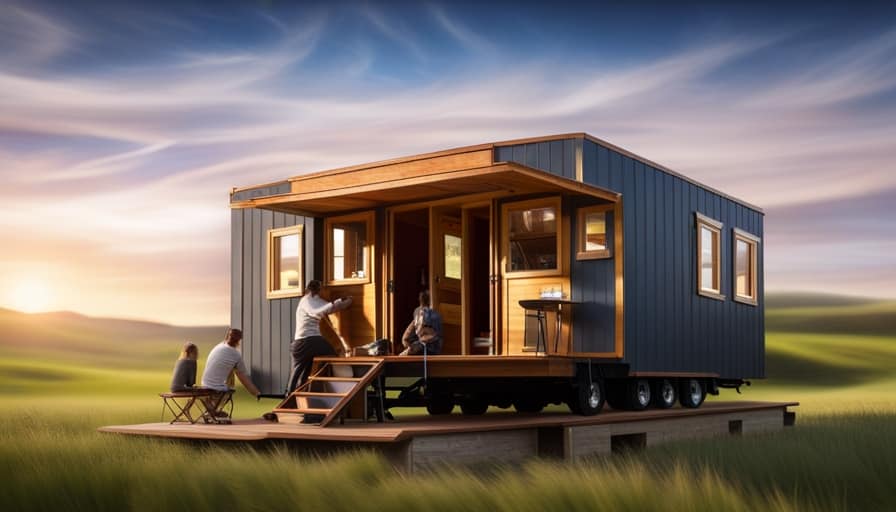
Conclusion
In conclusion, the city of Fresno has successfully embraced the tiny house movement through a shift in housing policies, collaboration with advocates, and innovative communities.
The zoning regulations and permitting processes have been streamlined to accommodate tiny house living. Despite challenges, the city has built a strong foundation for the tiny house movement to thrive.
As the saying goes, "The journey of a thousand miles begins with a single step," and Fresno has taken that step towards a more sustainable and affordable housing solution.
I’m Theodore, and I love tiny houses. In fact, I’m the author of Tiny House 43, a book about tiny houses that are also tree houses. I think they’re magical places where imaginations can run wild and adventures are just waiting to happen.
While tree houses are often associated with childhood, they can be the perfect adult retreat. They offer a cozy space to relax and unwind, surrounded by nature. And since they’re typically built on stilts or raised platforms, they offer stunning views that traditional homes simply can’t match.
If you’re looking for a unique and romantic getaway, a tree house tiny house might just be the perfect option.
Beginners Guides
How Do I Get Rid of Tiny Black Flies in My House
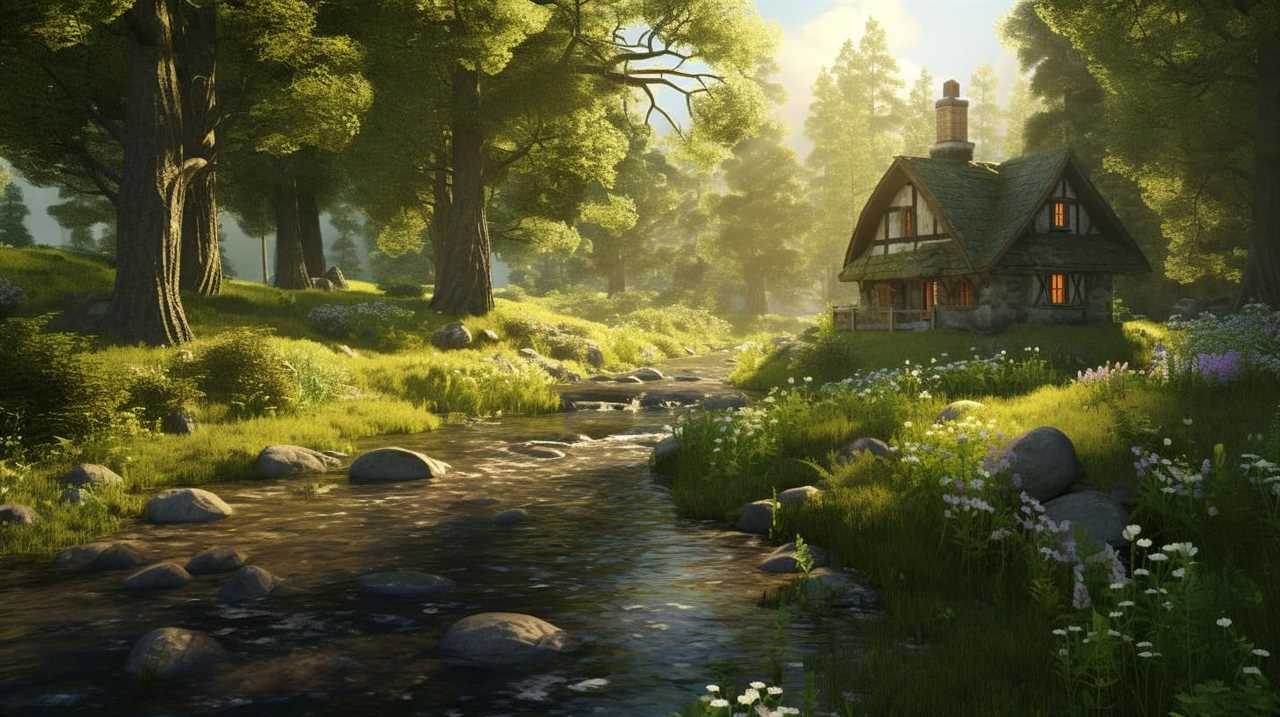
- Health risks associated with tiny black flies in the house
- Effective methods to prevent and control the presence of black flies in homes or gardens
I have tried every possible solution, but those annoying tiny black flies refuse to leave my house!
If you’re dealing with the same frustrating problem, don’t worry – I’ve got you covered.
In this article, I’ll share my expert knowledge on identifying these pesky bugs, understanding the causes of their infestations, and provide you with both natural and chemical remedies to banish them for good.
Say goodbye to those annoying flies and hello to a fly-free home!
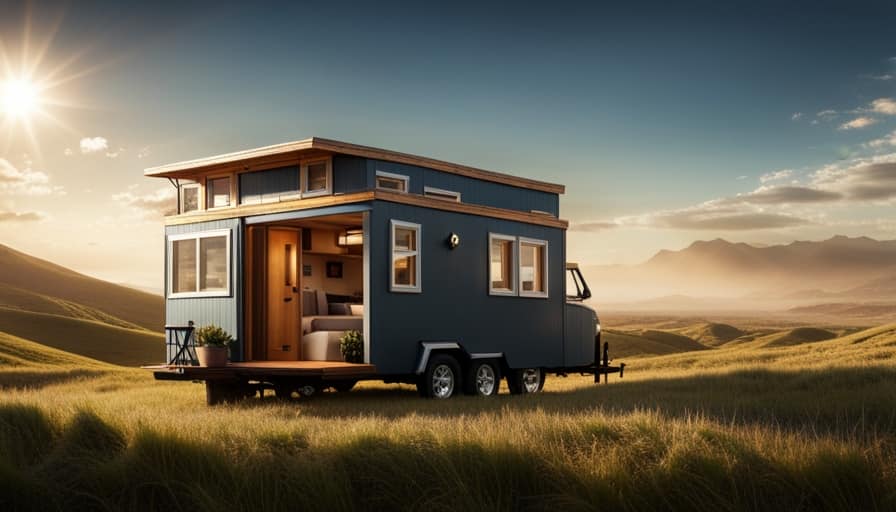
Key Takeaways
- Identify and eliminate breeding grounds by removing standing water and damp areas.
- Use natural remedies like homemade fly traps with apple cider vinegar and essential oils to repel flies.
- Consider using chemical treatments designed to kill black flies, following the instructions carefully.
- Take preventive measures to keep your house clean and free from food or organic debris to prevent future infestations.
Identifying the Tiny Black Flies
I can use a magnifying glass to examine the tiny black flies and determine their species. When it comes to differentiating between fruit flies and black flies, there are a few key characteristics to look out for.
Fruit flies are usually smaller in size, about 1/8 of an inch long, and have a tan or yellowish body with red eyes. On the other hand, black flies are slightly larger, measuring around 1/4 of an inch, and have a dark black or grayish body with dark wings.
Now, let’s move on to controlling and eliminating black flies in outdoor spaces. One effective method is to eliminate their breeding grounds by removing any standing water or damp areas where they can lay their eggs. Regularly emptying and cleaning birdbaths, flower pots, and gutters can help prevent black fly infestations.
Additionally, using insect repellents or installing fine mesh screens on doors and windows can provide some protection against these pesky pests.
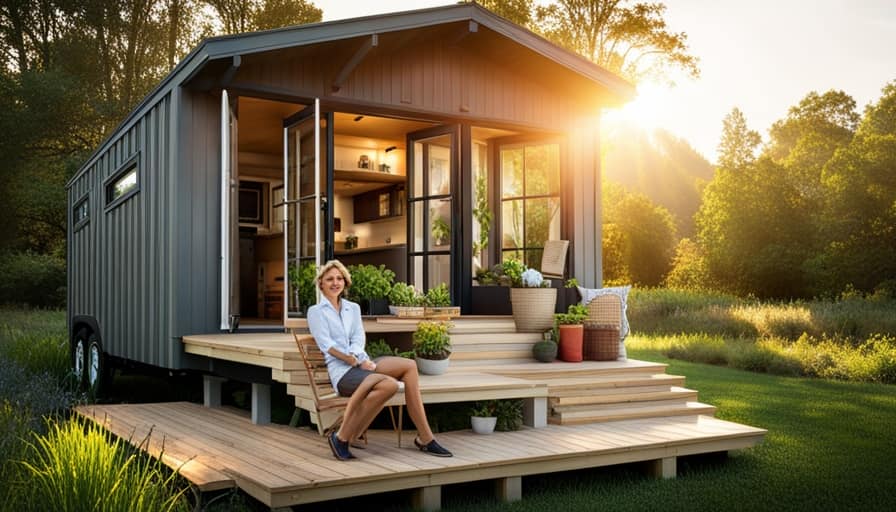
Understanding the Causes of Black Fly Infestations
To understand the causes of black fly infestations, we need to examine their preferred breeding sites and environmental conditions. These tiny pests thrive in moist and decaying organic matter, making the following places common breeding grounds for black flies:
-
Standing water: Black flies lay their eggs in standing water, such as ponds, lakes, and even puddles. It’s crucial to eliminate any stagnant water sources around your house to prevent infestations.
-
Overgrown vegetation: Black flies are attracted to dense vegetation, especially if it’s near water bodies. Trim shrubs, mow your lawn regularly, and remove any overgrown plants to discourage black flies from breeding.
-
Moist organic matter: Black flies lay their eggs in decomposing leaves, grass clippings, and other organic debris. Keep your yard clean and free of debris to reduce the likelihood of black fly infestations.
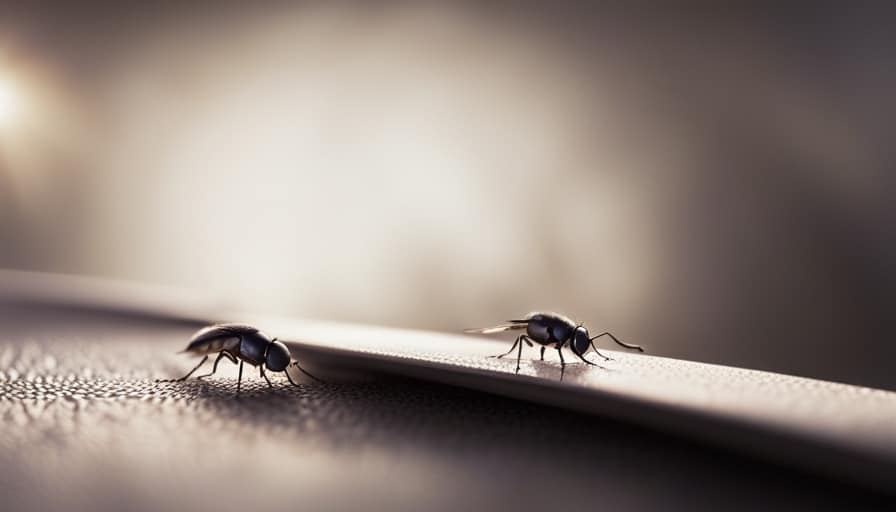
Understanding these common breeding grounds can help you identify and eliminate the causes of black fly infestations, keeping your home fly-free and comfortable.
Natural Remedies to Eliminate Tiny Black Flies
With a combination of proper sanitation and natural remedies, you can effectively eliminate tiny black flies from your house. One effective natural remedy is making homemade fly traps. These traps can be made using common household items such as apple cider vinegar, dish soap, and a plastic bottle. Simply cut the bottle in half, pour a mixture of apple cider vinegar and dish soap into the bottom half, and place the top half of the bottle inverted into the bottom half. The flies will be attracted to the scent of the vinegar, but the dish soap will prevent them from escaping. Another natural remedy is using essential oils for fly control. Oils such as lavender, peppermint, and eucalyptus have strong scents that repel flies. Simply mix a few drops of your chosen oil with water and spray it around areas where flies are present. By incorporating these natural remedies into your fly control routine, you can effectively get rid of tiny black flies in your house.
| Homemade Fly Traps | Essential Oils for Fly Control |
|---|---|
| – Apple cider vinegar and dish soap mixture in a plastic bottle | – Lavender, peppermint, and eucalyptus oils |
| – Flies are attracted to the vinegar scent but trapped by the soap | – Mix a few drops with water and spray in affected areas |
| – Simple and cost-effective solution | – Oils have strong scents that repel flies |
| – Dispose of trapped flies regularly | – Repeat application as needed |
Chemical Treatments for Getting Rid of Black Flies
By using chemical treatments, you can effectively eliminate black flies from your house. Here are three options to consider:
-
Chemical insecticides: These products are specifically designed to kill insects, including black flies. Look for insecticides that are labeled for use against flies and follow the instructions carefully. Apply the insecticide in areas where black flies are commonly found, such as around windows, doors, and other entry points.
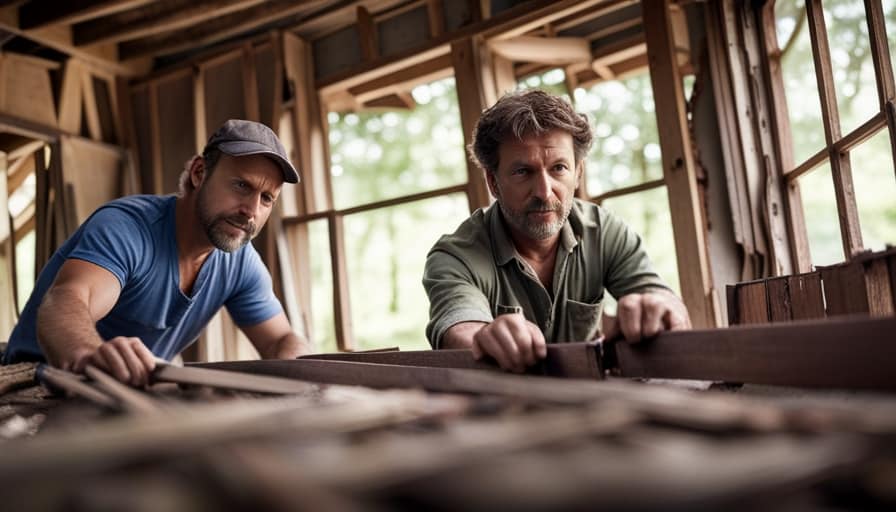
-
Fly traps: There are chemical-based fly traps available that attract and capture black flies. These traps use a combination of chemicals and pheromones to lure the flies in and prevent them from escaping. Place the traps in areas where black flies are present, such as near garbage cans or in the kitchen.
-
Professional exterminator: If you’re dealing with a severe infestation or if chemical treatments haven’t been effective, it may be best to call a professional exterminator. They have access to stronger chemicals and can provide a targeted approach to eliminate black flies from your house.
Remember to always read and follow the instructions on chemical insecticides and traps, and consider the help of a professional if needed.
Preventing Future Infestations of Tiny Black Flies
My best advice for preventing future infestations of tiny black flies in my house is to maintain proper sanitation and eliminate potential breeding grounds.
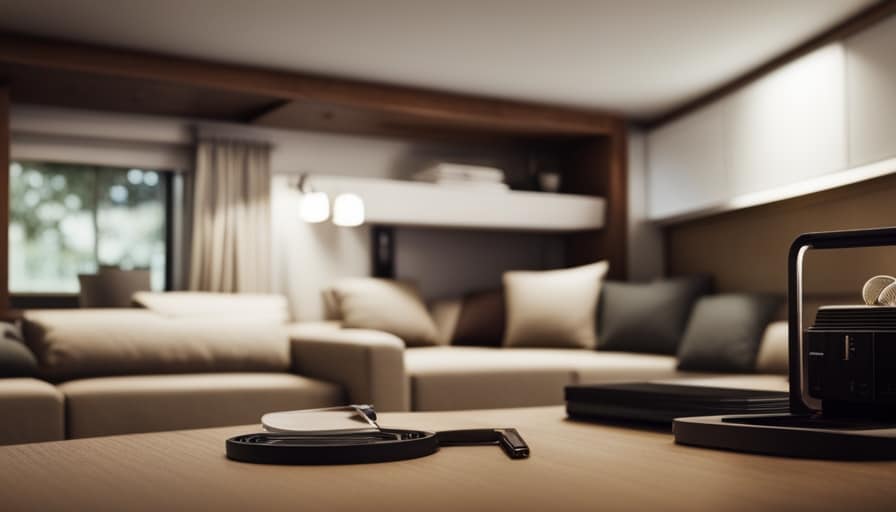
To maintain a fly-free environment, it’s important to keep your house clean and free from any food or organic debris. Make sure to regularly clean your kitchen, especially the countertops, sinks, and garbage disposal areas. Keep all food stored in airtight containers and promptly clean up any spills or crumbs.
Additionally, it’s crucial to identify and eliminate common breeding grounds for black flies in homes. These include standing water, damp areas, and overwatered plants. Regularly check for any leaks or moisture issues and fix them promptly.
Frequently Asked Questions
Can These Tiny Black Flies Harm Humans or Pets?
I’m not an expert, but I can share that tiny black flies in the house might be annoying, but they usually don’t harm humans or pets. It’s always a good idea to take preventive measures to control their presence.
Are There Any Specific Regions or Climates Where These Black Flies Are More Common?
In certain regions and climates, these pesky black flies tend to be more common. Understanding their preferences can help in devising effective strategies to keep them at bay.
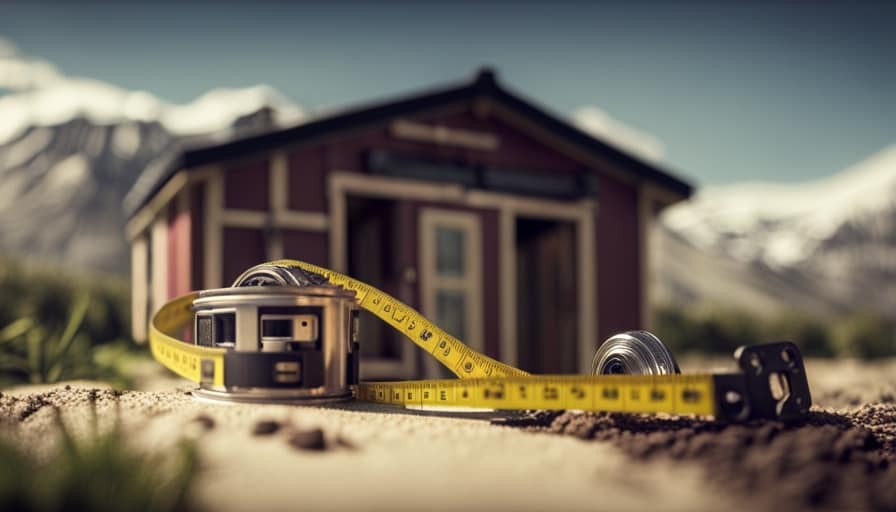
Can These Tiny Black Flies Cause Damage to Plants or Food?
Yes, these tiny black flies can cause damage to indoor plants as they lay their eggs in the soil. They can also contaminate stored food by landing on it and leaving behind bacteria.
How Long Does It Usually Take for Natural Remedies to Effectively Eliminate Black Flies?
On average, natural remedies can effectively eliminate black flies within a few days. However, the exact time may vary depending on the severity of the infestation and the specific remedies used.
Are There Any DIY Traps or Baits That Can Be Used to Catch and Eliminate These Tiny Black Flies?
There are several DIY fly traps and effective baits that can be used to catch and eliminate those pesky tiny black flies. Let me share some knowledge and details on how you can tackle this issue.
Conclusion
So there you have it, a plethora of methods to bid farewell to those pesky tiny black flies that have invaded your humble abode.
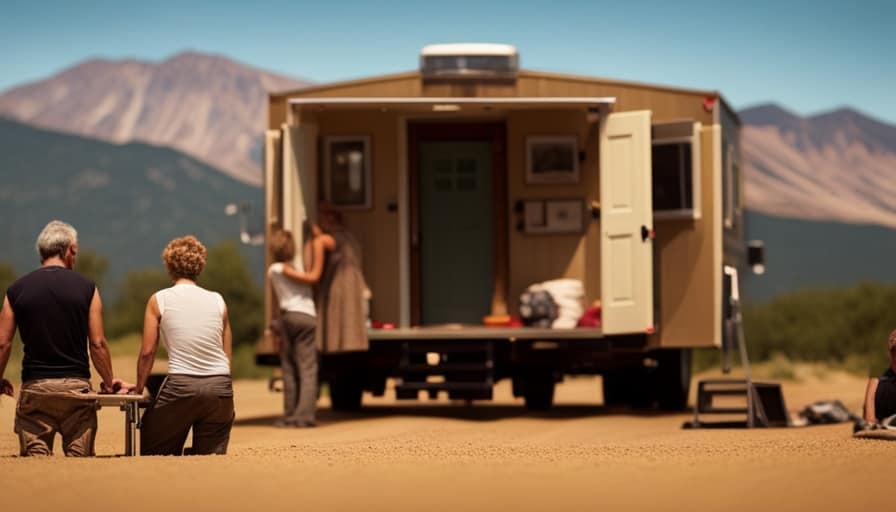
From natural remedies to chemical treatments, we’ve covered it all.
Now, armed with this knowledge, you can take control of your home and ensure these unwelcome guests never return.
Happy fly-free living!
I’m Theodore, and I love tiny houses. In fact, I’m the author of Tiny House 43, a book about tiny houses that are also tree houses. I think they’re magical places where imaginations can run wild and adventures are just waiting to happen.
While tree houses are often associated with childhood, they can be the perfect adult retreat. They offer a cozy space to relax and unwind, surrounded by nature. And since they’re typically built on stilts or raised platforms, they offer stunning views that traditional homes simply can’t match.
If you’re looking for a unique and romantic getaway, a tree house tiny house might just be the perfect option.
Beginners Guides
How Do I Get Rid of Tiny Bugs in My House

I have pests in my home that are causing me frustration! They are like small intruders that are appearing all over the place. However, do not worry, as I have conducted thorough research and found effective solutions to eliminate these bothersome pests.
In this article, I’ll guide you through identifying the types of bugs, understanding the causes of infestations, and providing natural and chemical remedies to eliminate them.
Say goodbye to those unwelcome guests and hello to a bug-free home!
Key Takeaways
- Identifying the specific pest by observing droppings or behavior is crucial in getting rid of tiny bugs in the house.
- Proper sanitation practices, such as keeping the kitchen and dining areas clean, are important in preventing bug infestations.
- Natural remedies like herbal insecticides and essential oils can be effective in deterring bugs without the use of harsh chemicals.
- Regular cleaning, sealing cracks, and maintaining a tidy home are essential in preventing future bug infestations.
Identifying the Types of Tiny Bugs in Your House
I can easily identify the types of tiny bugs in my house by observing their physical characteristics and behavior. One of the most common signs of an infestation is the presence of droppings or excrement. Different types of bugs leave different types of droppings, which can help determine the specific pest in your house.
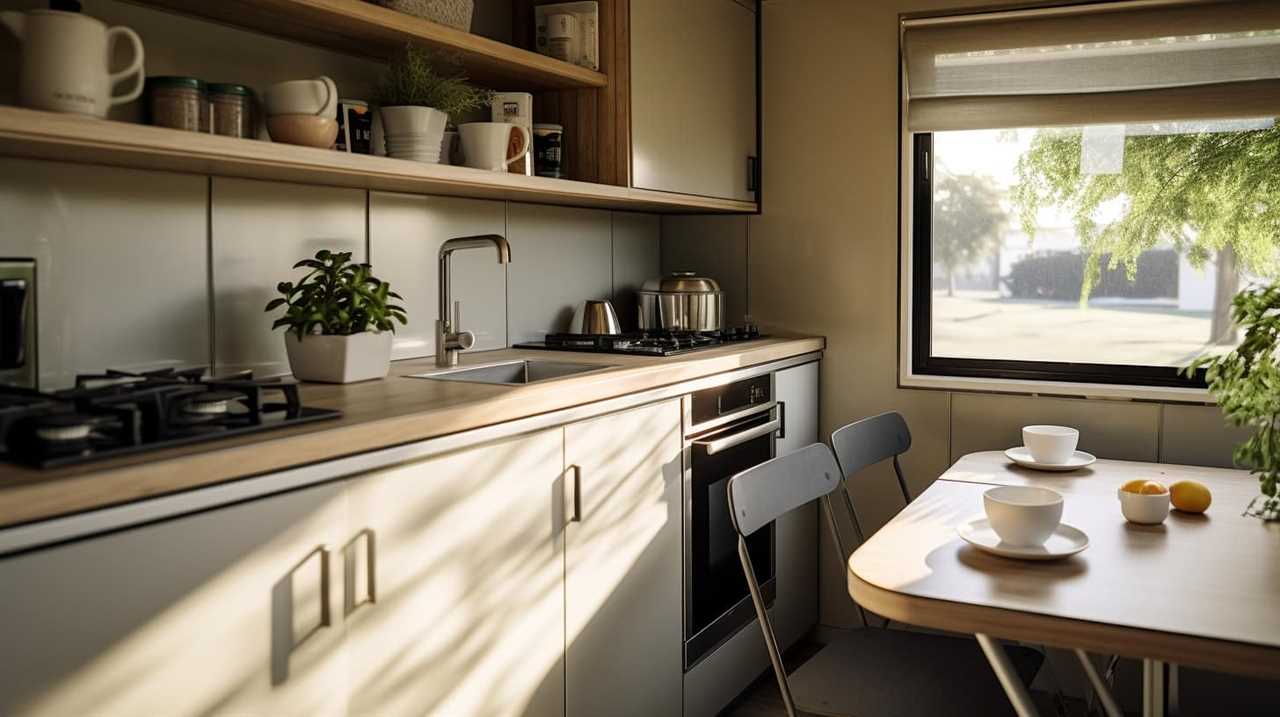
Additionally, observing the behavior of the bugs can provide valuable information. Some bugs are more active during the day, while others are nocturnal. Some bugs may prefer certain areas of the house, such as the kitchen or bathroom.
If you’re unsure about the type of bug in your house, it’s advisable to consult with professional exterminators who’ve the expertise to accurately identify and eliminate the pests.
Understanding the Common Causes of Bug Infestations
One of the most common causes of bug infestations is a lack of proper sanitation practices in the home. Understanding bug behavior and knowing their common household bug habitats can help prevent infestations.
Bugs are attracted to food sources, so it’s important to keep the kitchen and dining areas clean and free of crumbs and spills. Regularly emptying and cleaning garbage cans can also deter bugs from entering the home.

Additionally, bugs thrive in warm and moist environments, so it’s important to fix any leaks or damp areas in the house. Cluttered spaces provide hiding spots for bugs, so keeping the home organized and decluttered can help minimize their presence.
Natural Remedies to Get Rid of Tiny Bugs in Your House
To effectively eliminate tiny bugs in your house, try using natural remedies with ingredients such as vinegar and essential oils. Natural remedies are a great option for those who prefer non-toxic solutions and want to avoid harsh chemicals.
One effective natural remedy is using herbal insecticides. These insecticides are made from plant-based ingredients and can be sprayed in areas where bugs are commonly found, such as corners, cracks, and crevices.
Another natural remedy to consider is essential oils. Certain essential oils, such as peppermint, lavender, and tea tree oil, have insect-repellent properties. Simply mix a few drops of the essential oil with water and spray it around your house to deter bugs.
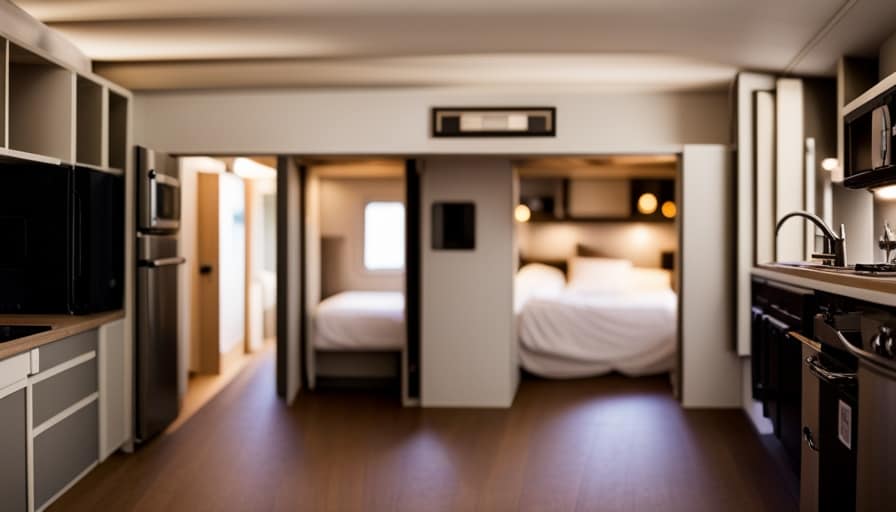
These natural remedies can be a safe and effective way to get rid of tiny bugs in your house.
Chemical Treatments for Eliminating Tiny Bugs
There are several effective chemical treatments available to eliminate tiny bugs in your house. When it comes to pest control methods, using insecticides is a common and efficient approach. There are various types of insecticides on the market, each with its own advantages and disadvantages.
It’s important to compare different insecticides to determine which one is best suited for your needs. Some insecticides target specific bugs, while others have a broad spectrum of effectiveness. Additionally, consider the application method and the duration of effectiveness. Some insecticides require direct contact with the bugs, while others can be used as a residual treatment.
It’s also essential to follow the safety instructions provided by the manufacturer when using chemical treatments to ensure the well-being of both humans and pets in your home.
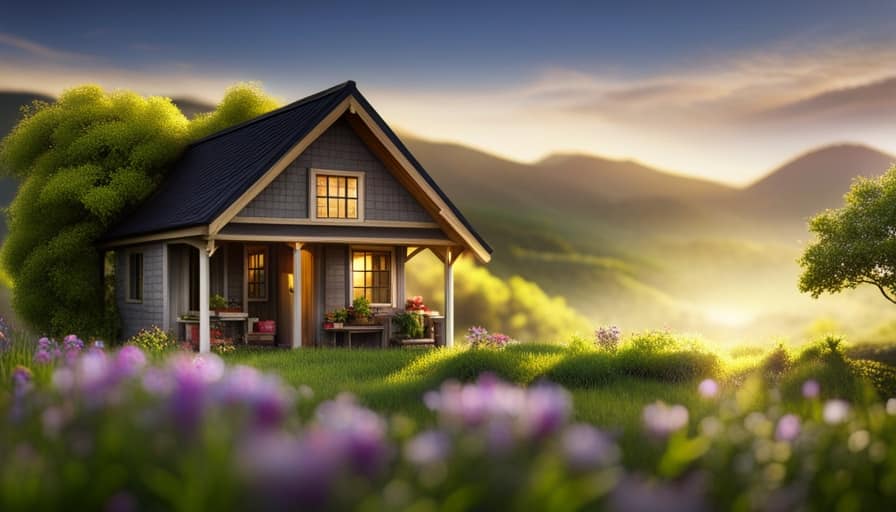
Preventing Future Bug Infestations in Your Home
I’ll make sure to regularly clean and seal any cracks in my house to keep bugs from coming in. Effective cleaning techniques are crucial in preventing bug infestations and creating a bug-free environment. Maintaining a clean and tidy home is essential to minimize the presence of bugs. Regularly vacuuming carpets and upholstery, sweeping and mopping floors, and wiping down surfaces will help eliminate any crumbs or food particles that may attract bugs. Additionally, proper food storage is essential to prevent bugs from being attracted to your kitchen. Keeping food in sealed containers and promptly cleaning up spills or crumbs will deter bugs from entering your home. Regularly inspecting and repairing any cracks or gaps in windows, doors, and walls will also help prevent bugs from finding their way inside.
| Cleaning Techniques | Maintenance Tips |
|---|---|
| Vacuum carpets and upholstery | Inspect and repair cracks or gaps |
| Sweep and mop floors | Properly store food to deter bugs |
| Wipe down surfaces | Regularly clean and seal cracks |
| Dispose of trash regularly | Keep a tidy and clutter-free home |
Frequently Asked Questions
Can These Tiny Bugs Cause Any Harm to Humans or Pets?
I’m not sure about the specific bugs in your house, but some tiny bugs can cause harm to humans or pets. It’s important to address the bug infestation promptly to protect your health and take preventive measures to keep them out.
How Long Does It Typically Take for Natural Remedies to Effectively Get Rid of Tiny Bugs?
It typically takes a few weeks for natural remedies to effectively eliminate tiny bugs. However, it’s important to note that results may vary. As for side effects, natural remedies are generally safe for humans and pets.
What Are Some Signs That Indicate a Bug Infestation in the House?
Signs of a bug infestation in the house include seeing live or dead bugs, finding their droppings or eggs, and noticing damage to furniture or walls. Preventing bug infestations involves keeping a clean and tidy home, sealing entry points, and using insect repellents.
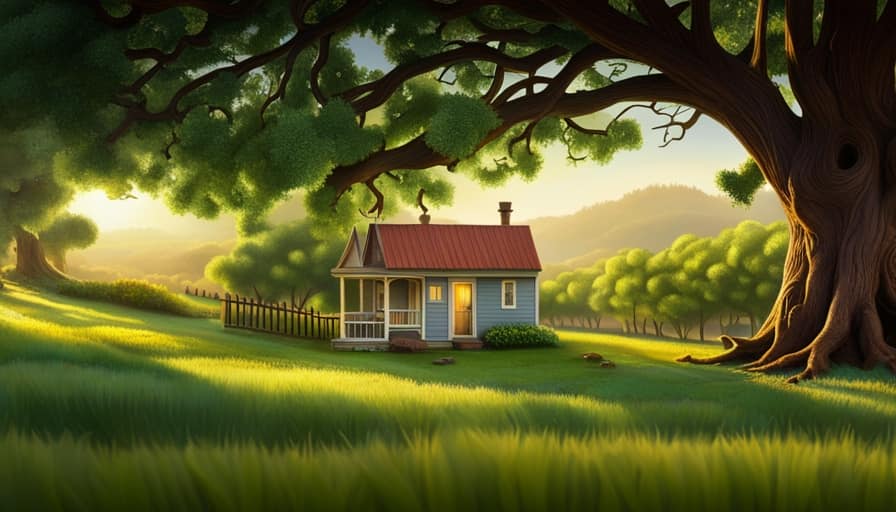
Are There Any Specific Areas in the House Where These Tiny Bugs Are Commonly Found?
In my experience, tiny bugs tend to hide in common areas like kitchen cabinets, bathrooms, and near windows. To prevent them, I recommend regular cleaning, sealing cracks, and keeping food stored properly.
Can Certain Weather Conditions or Changes in the Environment Attract These Tiny Bugs Into the House?
Certain weather conditions or changes in the environment can attract these tiny bugs into the house. Factors like warm and humid weather, open windows, and presence of organic matter can make your home more inviting for them.
Conclusion
In conclusion, while it can be frustrating to deal with tiny bugs in your house, there are effective ways to get rid of them.
By identifying the types of bugs and understanding the common causes of infestations, you can take natural or chemical treatments to eliminate them.

Additionally, taking preventive measures can help to avoid future bug infestations.
Remember, with the right knowledge and strategies, you can create a bug-free environment in your home.
I’m Theodore, and I love tiny houses. In fact, I’m the author of Tiny House 43, a book about tiny houses that are also tree houses. I think they’re magical places where imaginations can run wild and adventures are just waiting to happen.
While tree houses are often associated with childhood, they can be the perfect adult retreat. They offer a cozy space to relax and unwind, surrounded by nature. And since they’re typically built on stilts or raised platforms, they offer stunning views that traditional homes simply can’t match.
If you’re looking for a unique and romantic getaway, a tree house tiny house might just be the perfect option.
-

 Beginners Guides2 weeks ago
Beginners Guides2 weeks agoHow To Buy A Tesla Tiny House
-

 Energy Efficiency2 months ago
Energy Efficiency2 months agoBest Tiny Homes For Cold Climates
-

 Beginners Guides1 week ago
Beginners Guides1 week agoTiny House Nation Where Are They Now Stephanie
-

 Tiny House Resources (e.g., legalities, cost, insurance, FAQs)2 months ago
Tiny House Resources (e.g., legalities, cost, insurance, FAQs)2 months agoDo Tiny Homes Need Planning Permission?
-

 Beginners Guides3 weeks ago
Beginners Guides3 weeks agoFrom The Show Tiny House Nation How Many Keep Their Tiny House?
-

 Beginners Guides2 months ago
Beginners Guides2 months agoUsing a Climbing Net For Treehouse Construction
-

 Beginners Guides2 months ago
Beginners Guides2 months agoHow to Build a Treehouse Without Drilling Into the Tree
-
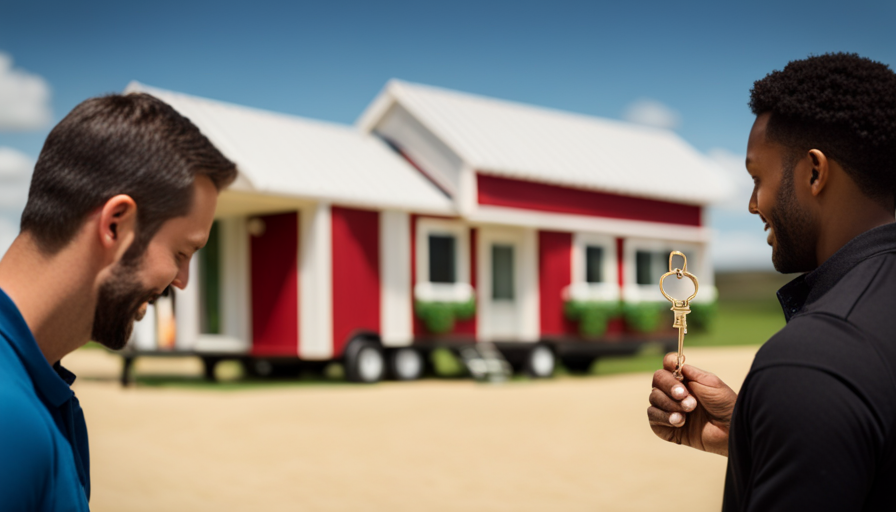
 Beginners Guides3 weeks ago
Beginners Guides3 weeks agoTiny House Nation Who Pays For The Houses




